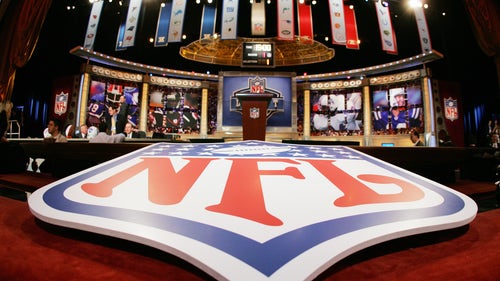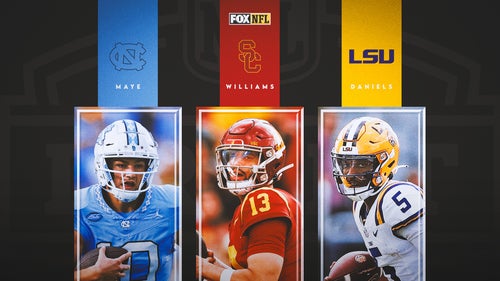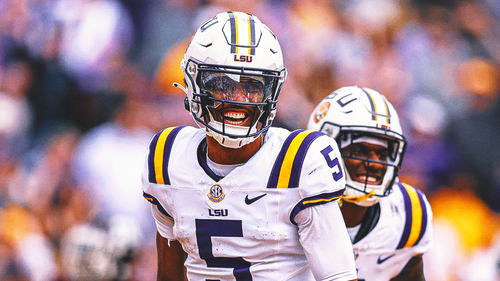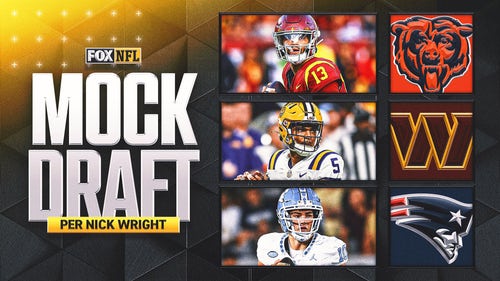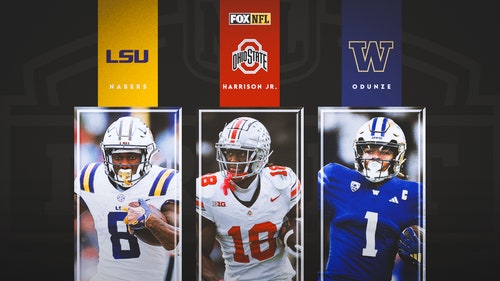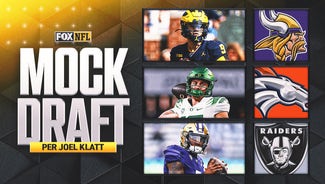
The NFL Can't Outrun a Legacy of Abuse
In the summer of 2006, Bill Belichick introduced Dr. Thomas Gill as the Patriots’ new team physician. Gill, who had been with the team for eight years in a support role, and athletic trainer Jim Whalen met with every player on the roster, all of whom were gathered in the team auditorium at the beginning of training camp. Gill and Whalen would lay down their philosophy on player care, discussing best practices and the known risks of drugs including various opioids and the anti-inflammatory drug Toradol, which was growing in popularity across the league.
Each subsequent year, Belichick gave his top two medical professionals as much time as needed, never setting a limit on the session, which typically ran between the first practices of camp and team and positional meetings. Dr. Gill says he typically gave out his cell phone number during the informational session in case a player had additional questions he might feel reluctant to ask in the team setting.
“From the Patriots’ standpoint, we would never treat our players any differently than we would a patient in the office,” says Gill, who left the team in 2014. “So we would never give a patient in the office any medication we didn’t explain the risks and benefits to, and the same went for the players.”
Gill says he has confidence other medical professionals across the league were doing the same, though, he admitted, “I don’t know how different people did it.”
In details of a federal lawsuit revealed this month by the Washington Post, it was made apparent that different medical professionals around the league were handling things very differently at the turn of the century. Various depositions and emails acquired by lawyers for NFL players painted the picture of a cavalier attitude toward player care, which included the skirting of federal drug laws and a culture of oversubscription of pain medication to players.
“The [Toradol] suit is full of s---,” says one former team doctor. “Nobody told me from high above that you needed to drug these guys up and get them on the field.”
Neither Gill nor Whalen are mentioned in the lawsuit, but numerous other team doctors, trainers and coaches are alleged to have participated in a prescription drug culture with few checks and little regard for the law. The lawsuit went on to qualify Toradol and other opioids as the latest in a long line of drugs that the NFL medical community has made available to players without first conducting extensive research or ensuring necessary structure and oversight: “Quaaludes and amphetamines beginning in the mid-1960’s, Vioxx and OxyContin beginning in the 1970’s, Percocet and Indocin in the 1980’s and, beginning in the 1990’s, Toradol.”
* * *
At issue is the notion—oft-cited in recent lawsuits filed by players against the NFL—that team doctors and athletic trainers are more beholden to the teams they work for than to the players, and thus less obligated to their patients than they would be in a traditional medical setting.
Conveniently, the revelations of the most recent lawsuit come four months after researchers at Harvard University, in a study funded by the NFLPA, made legal and ethical recommendations concerning medical care for NFL players. The Harvard researchers wrote that the Toradol binge had essentially been quelled and that responsible practices began taking hold as far back as five years ago, citing anonymous interviews with players who described a shift in 2012, the year the league’s physician society drafted recommendations for curtailed use of the drug. That document, authored by then society head and Rams team doctor Matt Matava, followed a lawsuit filed on behalf of several NFL players including former Saints receiver Joe Horn, which alleged that medical staffs were providing dosages of Toradol strong enough to cover up concussion symptoms and create a host of adverse long-term consequences.
That suit is still in litigation in Philadelphia. Meanwhile, medical research has yet to develop concrete evidence of serious longterm consequences for the use of Toradol. “There’s always been a question about whether long-term use in very high doses could create long-term problems,” says Dr. D. Craig Brater, an author of the 2012 recommendations to the NFL Physician Society and an expert in the field of non-steroidal inflammatory drugs. “But there’s no hard, strong evidence that says [long-term use] could, so it’s all speculative.”
“They never told us any side effects,” a former player says. “They did enough to cover their ass, I guess.”
Yet, the image painted by Toradol use in the NFL is a jarring one—dozens of players in line for pain-numbing shots before games.
“There is a stigma about players lining up for shots before a game,” Dr. Gill says. “It sounds bad. I think there’s a big public perception problem with injecting players with anything before a game, because I think the public doesn’t understand, and to some extent the PA doesn’t understand the side effects, safety and the like.
“Toradol is not going to cover up the effects of a concussion. It’s basically an anti-inflammatory. Like injecting Motrin.”
Numerous NFL players who spoke with The MMQB could not remember being briefed in detail on the potential side effects of Toradol use, which include renal failure, until after the 2012 recommendations. Ex-Jaguars linebacker Russell Allen recalls using the drug, which he says was a boost in the recovery process, until the team required players to sign a waiver to take it. “I figured, if this was something we needed to sign a specific consent form to use, I didn’t need any part of that.”
A former NFL fullback who retired several years ago and asked not to be named, estimated he took a Toradol shot before every game he played—preseason, regular season and playoffs—for about a decade. He doesn’t know if his current knee soreness and joint stiffness can be attributed to anything more specific than a decade spent running into people.
“They never told us any side effects,” the fullback says. “They didn’t necessarily go out of their way to prevent you from taking it. They did enough to cover their ass, I guess.”
In their recommendations, Harvard researchers argued an alternative to the NFL simply “covering their ass,” as the fullback put it. The current system of medical care in the NFL, they said, remains vulnerable to future drug binges and scandals, and could be improved to both avoid these sorts of crises and ensure more responsible care for players. There could be a way, the authors wrote in November, to avoid the ethical turmoil that encircles the introduction of a new go-to drug.
The study concluded, as part of its recommendations to the league, that “The current arrangement in which club (i.e., “team”) medical staff, including doctors, athletic trainers, and others, have responsibilities both to players and to the club presents an inherent conflict of interest.” To ameliorate the conflict of interest, they argued, player care should be provided by medical professionals appointed by the NFL and NFLPA, and the “evaluation of players for business purposes” should be done by a team-employed doctor.
“Given the choice between doing the right thing and looking like they’re doing the right thing, the NFL will always choose the latter.”
It’s a finding that resonates with Gill, who saw the trust between players and doctors begin to deteriorate during his final seasons in the NFL, as players began seeking second opinions in larger numbers.
“Some of the top sports medicine doctors in the world are head physicians for the NFL, so you’d hope that players would understand that and make decisions based on the track record of the doctor,” Gill says. “But I think in 2017 that’s a little bit unrealistic. A lot of agents have relationships with second-opinion doctors, some of which are financial. So that no matter the problem, they want to show their value to the player by taking them to these doctors.
“It’s easy to say there is a conflict of interest because doctors are being paid by the teams. Because perception is reality, the only way to get rid of the conflict is to remove the fact that teams fire and hire physicians.”
However, in its 33-page response to the Harvard study, the league scoffed at the presumption of a conflict of interest: “We were disappointed that the Report appeared to start with the premise that the health care system in the NFL suffers from an ‘inherent conflict of interest,’ and then sought to justify that predetermined conclusion through an unscientific survey of an anonymous ‘convenience sample’ of only thirteen current and former NFL players.” Later in the very same document, the league touted the addition of independent neurotrauma consultants who now man the sidelines and help staffs identify concussions, an unwitting trial run for the very practice Harvard recommends.
* * *
If the league valued the opinions of its players, it might come to a different conclusion; in 2013 NFLPA executive director DeMaurice Smith said a poll of players showed that 78 percent don’t trust team medical staffs, and just 43 percent of respondents rate team training staffs as “good.”
Yet the players association has been unsupportive of any measure that would take away the right of an NFL team to hire its own medical staff. Pressed on the issue at a symposium at the University of Houston during Super Bowl week, Smith had the following exchange.
Q: Does the NFLPA think there’s an inherent structural conflict of interest in having doctors that treat players while also having advice to the club?
“The reason why we have Hippocratic oaths,” Smith answered, “an oath that we are going to serve the interest of our clients. We do that because each and every one of us are engaged in a profession where we have a specific duty.”
Smith went on to draw the comparison between the health of NFL players upon whom the success of multi-billion NFL teams hinge, and the health of undergraduate students at universities across the country. “It’s the exact same thing that happens at a university that has a student health plan, and somebody walks in and says, I’m sick,” Smith said. “We would never say we need to come up with a committee of students and the university to create a neutral health care system.”
Luckily for Smith, the session ended without opportunity for a follow-up question, which might have pointed out the silliness of comparing an NFL team to a university, which doesn’t have its success riding on the short-term health of a few students out of the hundreds or thousands on campus. (Schools aren’t in the business of winning or losing—there’s no inherent conflict between the school and the student regarding health, no rush to get the student back to class before he or she is ready.)
Smith knows this. The real answer is that the NFLPA would rather not assume any responsibility or risk in the realm of healthcare, and besides, the NFL is averse to ceding any sort of authority from its clubs to the players, making the Harvard recommendation a non-starter for both sides. Meanwhile, the NFL continues to shell out dollars to settle lawsuits with players who potentially suffered from, and now take advantage of, the snail's pace at which the league responds to rising tides.
“The [Toradol] suit is full of s---. Nobody told me from high above that you needed to drug these guys up and get them on the field,” says one former team doctor, who requested anonymity due to the pending litigation. “However, I think the NFL has stepped in it. They look bad right now and they are ultimately going to have to pay some money to respond. It’s pretty clear that in 2010 this all came out and they were slow to respond and saw it as an isolated issue. They failed to sound the alarm.
“Given the choice between doing the right thing and looking like they’re doing the right thing, they will always choose the latter.”
This is the legacy of the concussion crisis and the subsequent class-action lawsuit, which the NFL settled for $1 billion in 2015. No matter what changes the league makes for the better, outrunning the legacy of abuse and disregard for player health is proving to be a difficult task. The players’ association declines to take this opportunity to wrestle some authority from the league, setting the stage for the next drug crisis to put players at risk and widen the gap between them and their employers.
Again and again, the levees break.
Question or comment? Email us at talkback@themmqb.com.








































































































































